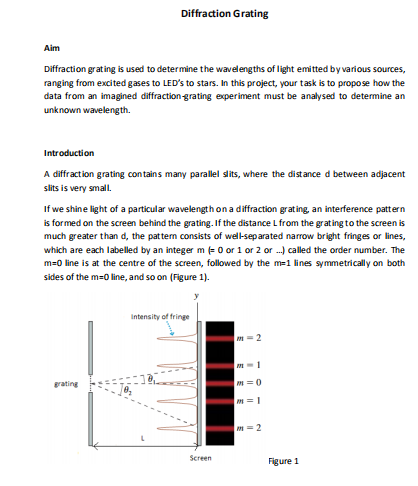

A diffraction grating is a device that splits electromagnetic radiation into its constituent wavelengths. In this blog, we cover the applications of diffraction gratings for spectrometry tools in modern technology.Įvolved from Young’s Double Slit experiment, diffraction gratings are the preferred method of light scattering in many spectrometers. That is, it proved that light exhibits properties of both waves and particles. The discovery of light diffraction was monumental in optical physics because it proved light’s wave-particle duality. Young’s Double Slit experiment demonstrates the same principle by passing light through a small slit and observing the light on a screen when it exits on the other side. On the white screen, you will observe an array of colors as each wavelength in the visible spectrum is bent to a different degree, effectively separating the white light into its constituent colors. In the prism experiment, white light is passed through a prism and viewed on a white screen as it exits the prism. The phenomena can be best observed using the prism experiment or Young’s Double-Slit Experiment. Multiplying D by the slit width gives an indication of the wavelength resolution.Diffraction is the bending of a wave as it passes around a corner or through an opening. Here, D is called the "reciprocal linear dispersion" and represents the difference in wavelength per unit length on the surface of the exit slit in the optical system. d β = dx, inverting both sides of equation (4) gives the following:.Multiplying both sides of equation (3) by the focal distance ƒ for the optical systems gives the following: Here, d β/dλ is called the "angular dispersion" and can be used to obtain the change in diffraction angle d βcorresponding to a change in wavelength dλ. If the incident angle α is regarded as a constant, differentiating both sides of equation (2) with respect to λ gives the following: The way in which the diffraction angle λ β behaves when light composed of different wavelengths is directed at a grating is an important point when considering the separation of light into its components. For example, if the incident angle α = 30° and the groove density N = 2400 grooves/mm, applying the equation to first-order light (i.e., m = +1) with a wavelength λ of 700nm gives sin ß = 1.18, then diffracted light cannot be obtained in this case. One point requiring consideration is that, depending on the groove density N, it may not be possible to obtain diffracted light. The diffraction angle ß also varies with the groove density N and the incident angle α. This is why gratings can be used to separate white light into its constituent wavelengths. It can also be seen that for m ≠ 0 the diffraction angle ß is different for each wavelength. It can be seen from this relationship that all components of light corresponding to m = 0 (zero-order light) are radiated in a straight line and so it is not possible to separate the wavelengths with this order. N : Number of slits per mm ( the groove density, equal to the reciprocal of the grating period) 1-2 The Principle of Reflection GratingsĪs shown in Fig.1-1 and Fig.1-2, α is the angle between the incident light and the normal to the grating (the incident angle) and ß is the angle between the diffracted light and the normal to the grating (the diffraction angle), then, they satisfy the following relationship:Īs shown in Fig.1-1, in case of transmission gratingĪs shown in Fig.1.2 in case of a reflection grating,ĭ : Spacing between the slits (the grating period) The light from all the slits is reinforced in the same way to produce "diffracted light."įig. 1, light is reinforced when the optical path difference is a multiple of the wavelength. In short, for parallel beams that enter neighboring slits as shown in Fig. Picking out diffracted (reinforced) light makes it possible to select the required light component. When white light enters the grating, the light components are diffracted at angles that are determined by the respective wavelengths (diffraction). The simplest type of grating is one with a large number of evenly spaced parallel slits. Our Technology for Manufacturing GratingsĪ diffraction grating is an optical element that divides (disperses) light composed of lots of different wavelengths(e.g., white light) into light components by wavelength.


 0 kommentar(er)
0 kommentar(er)
